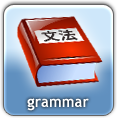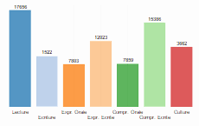| Grammar |
PARTICLE MO (も)
The basic structure in Japanese is “topic WA information DESU.” Here, instead of the particle は, comes the particle MO (も), which means “too/also/as well.” Be careful: don’t use は and も at the same time. To translate “too,” you must remove は.
| Watashi wa daigakusei desu. |
| As for me, I’m a student. |
| Watashi mo daigakusei desu. |
| I’m a student, too. |
| Matsumoto san mo daigakusei desu ka. |
| Mrs./Ms./Mr. Matsumoto, are you a student, too? |
Pour poster un commentaire, connectez-vous à votre compte




















Administrator
Haribara
Renatokun